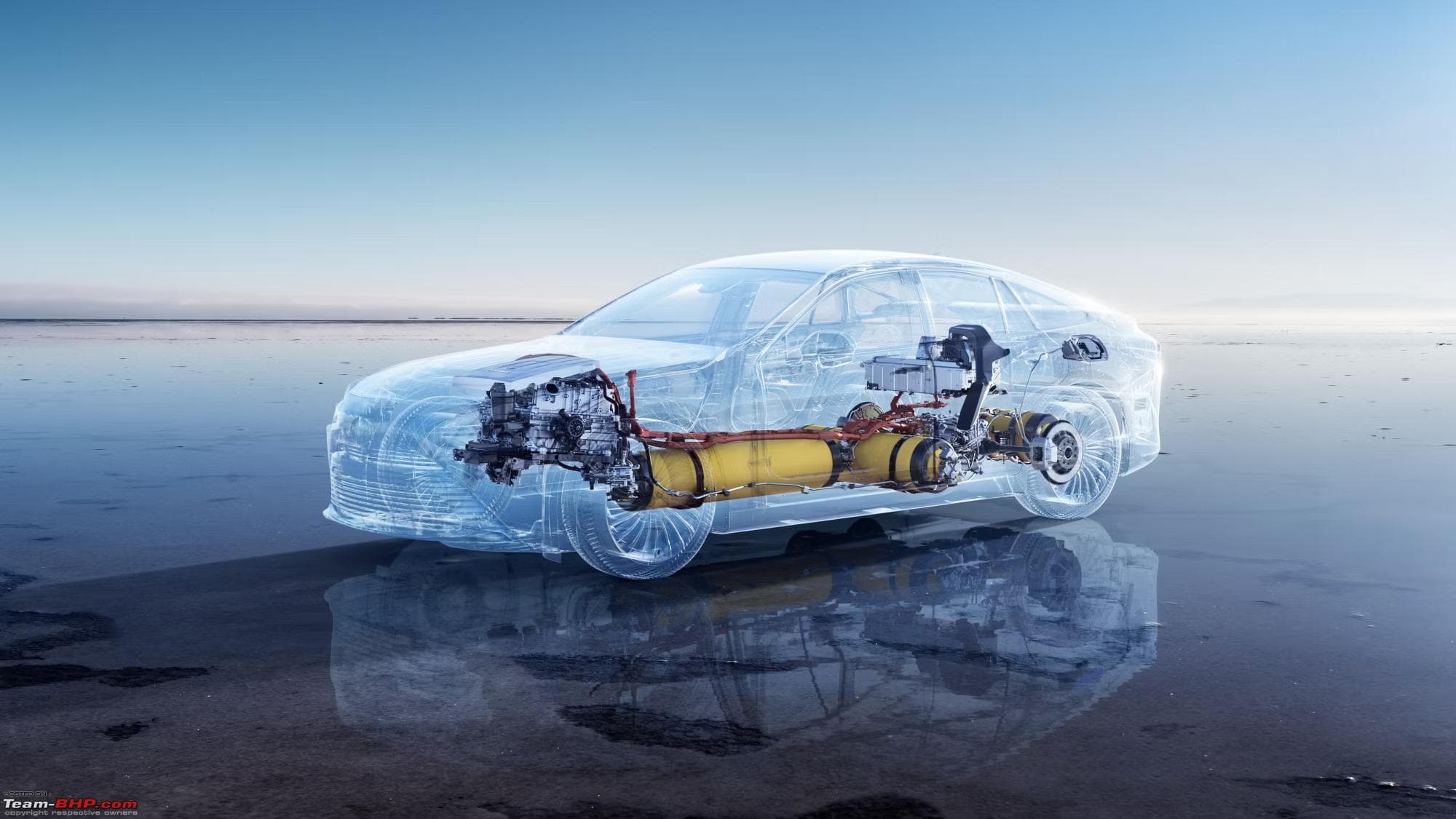Over the past decade, alternative energy vehicles have rapidly begun to replace traditional internal combustion engine transport. Leading global automakers are investing billions in developing technologies that reduce carbon emissions and dependence on fossil fuels. Alongside electric cars, hydrogen-powered vehicles are increasingly in the spotlight — a promising yet less common solution. They are actively promoted as a cleaner and faster alternative to battery electric vehicles. But do hydrogen vehicles really have a future, or is this a road to nowhere?
Hydrogen Technology: How It Works
Hydrogen cars, or Fuel Cell Electric Vehicles (FCEVs), use a chemical reaction between hydrogen and oxygen to generate electricity that powers the electric motor. Unlike traditional electric vehicles, where electricity is stored in a battery, FCEVs generate energy directly onboard. The only byproduct is water vapor — which at first glance makes these cars seem like an ideal environmental choice.
However, the principles behind FCEVs are not as simple as they seem. For hydrogen to become a truly widespread fuel of the future, a developed infrastructure, high energy efficiency, and consumer accessibility are essential.
Advantages and Disadvantages of Hydrogen Transport
One of the key benefits of hydrogen vehicles is their fast refueling time — just 3 to 5 minutes, unlike electric cars which often require anywhere from 30 minutes to several hours. Moreover, hydrogen vehicles offer a solid driving range: for example, the Toyota Mirai can travel more than 600 km on a single fill. This makes them attractive for long-distance travel and commercial use.
On the downside, hydrogen production remains expensive and not always environmentally friendly. Most hydrogen today is derived from natural gas, which results in CO₂ emissions. The greener alternative — “green” hydrogen produced using renewable energy — is still in its infancy and requires significant investment. Another issue is infrastructure: most countries lack a network of hydrogen filling stations, and building each station costs millions of euros.
Comparison with Electric Cars: What Does the Market Choose?
Battery Electric Vehicles (BEVs) currently dominate the sustainable transport market. They are easier to maintain, already widespread, and supported by numerous government initiatives worldwide. The development of charging stations is progressing rapidly, and battery costs are steadily decreasing.
So a logical question arises: why hydrogen, if electric vehicles are already performing well? This is particularly relevant for consumers in Portugal, where the electric vehicle market is steadily growing, and the number of charging stations already allows for comfortable driving even outside major cities.
Economics, Infrastructure, and Reality
From an economic standpoint, hydrogen is currently losing to electric vehicles. Producing, storing, and transporting hydrogen involves high costs. Additionally, the efficiency of the hydrogen system is lower: first, hydrogen must be produced, then converted into electricity in the fuel cell, and only then delivered to the wheels. In electric vehicles, this path is shorter and more efficient.
Another major barrier is infrastructure. In Portugal, as in much of Southern Europe, hydrogen filling stations can be counted on one hand. Even in countries that strongly support FCEV development, such as Germany and Japan, the filling station network remains very limited. This significantly hampers the everyday use of such vehicles, especially in the private sector.
Who Has a Chance: Private Transport or the Commercial Sector?
It is likely that hydrogen will find its niche not in the passenger car segment but in freight transport, public transit, and aviation. In these sectors, high range and fast refueling are crucial, and battery weight becomes a limiting factor for larger vehicles. Already today, companies like Hyundai and Nikola are developing hydrogen-powered trucks, and pilot projects for hydrogen buses are underway in Europe.
Thus, the future of hydrogen transport may depend less on everyday consumers and more on the needs of logistics and infrastructure sectors.
The Portuguese Context and Outlook
Portugal is making steady progress toward green energy, but remains cautious about hydrogen transport. Most investments are directed toward solar and wind power, as well as expanding the electric vehicle charging network. Hydrogen is currently viewed more as an export product or a solution for industrial applications.
In the coming years, interest in hydrogen energy may increase, especially if breakthroughs occur in cost reduction and infrastructure development. However, for now, hydrogen vehicles are unlikely to pose serious competition to electric cars in everyday use.
Conclusion: Innovation or Dead End?
Hydrogen cars are not a dead end, but neither are they a one-size-fits-all solution. They offer impressive environmental benefits and potential in commercial transport, but require massive investment and overcoming significant infrastructure challenges. For now, markets — especially in countries like Portugal — are leaning toward electric vehicles. Yet in the long term, hydrogen may become an important element in the energy balance — not as a replacement, but as a complement to battery technologies.
The answer to the question posed in the headline is still unclear — but it is certainly worth keeping an eye on the evolution of hydrogen transport.




